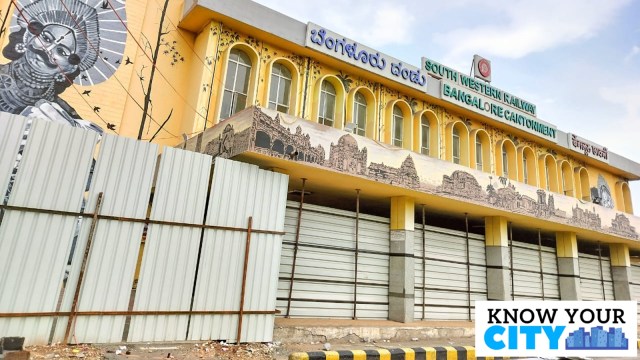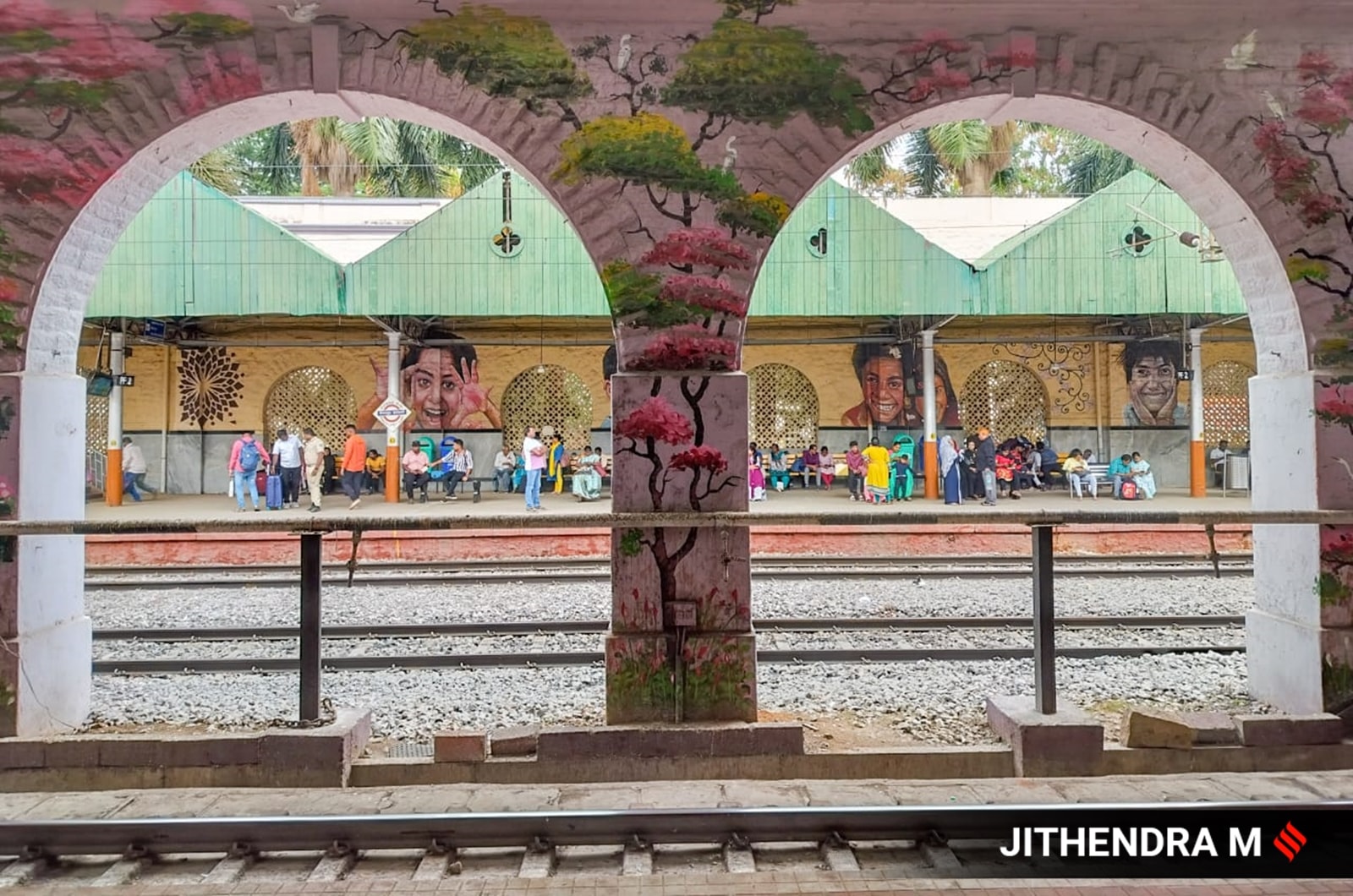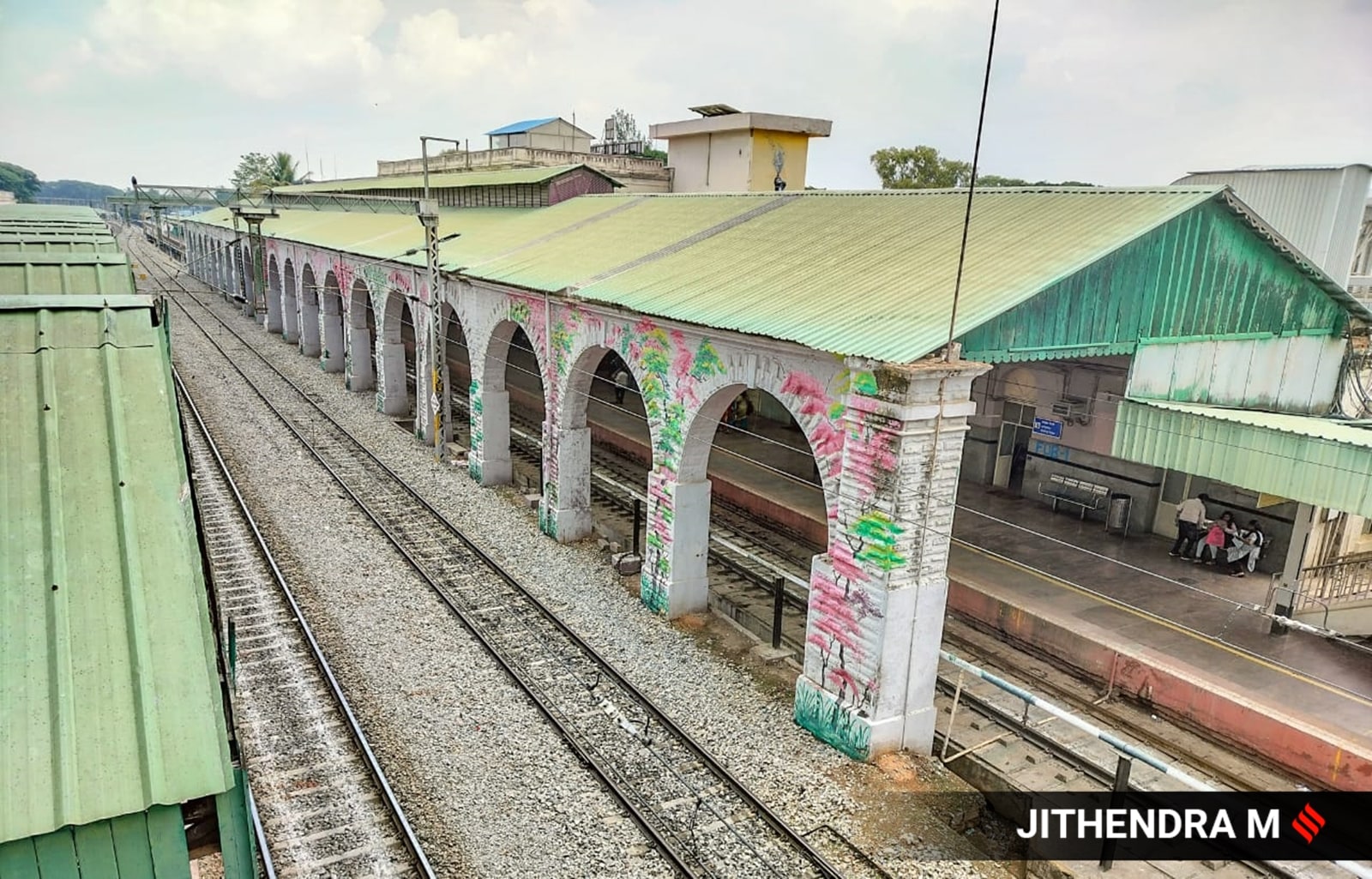How Cantonment railway station made Bangalore a military hub in British India
The Cantonment station in Bangalore was established in 1864, barely a decade after the first railway line in India, connecting Bombay and Thane, was completed in 1853.
 The Cantonment Railway Station in Bengaluru. (Express photo by Jithendra M)
The Cantonment Railway Station in Bengaluru. (Express photo by Jithendra M)The Cantonment Railway Station is today one of the busiest spots in Bengaluru, a major rail hub for travellers in and out of the city. But over 150 years ago, it was a very different place – and in many ways, it was one of the factors that made the city what it is today.
The story of the station begins in 1864, shortly after the tenure of Sir Mark Cubbon as chief commissioner in Mysore had ended. Cubbon had built up the finances of the princely state in the years after the British wars with Tipu Sultan and the upheavals that followed; his successor, Lewin Bentham Bowring, capitalised on this with a host of infrastructure projects in the 1860s.
City historian Arun Prasad explains, “The British government needed good transportation links to their headquarters in Madras, which was the centre of trade in south India. For a long time, horse carriages were the primary means of transport via road….by the 1830s, proposals for railways in India were already being debated in the British Parliament and supported by traders and bankers.”
In this context, the Cantonment station had come into being barely a decade after the first railway line in India, connecting Bombay and Thane in 1853. Prasad added, “Bowring had said in a speech that with the opening of the railway line in 1864, the town became the nucleus of the trade with the whole country, and the population has increased so largely that it now ranks next to Madras among the cities of southern India.”
 A view of the Bangalore Cantonment Railway Station. (Express photo by Jithendra M)
A view of the Bangalore Cantonment Railway Station. (Express photo by Jithendra M)
Prasad also noted that the first line from the Cantonment station, which stretched to Jolarpettai in today’s Tamil Nadu, had initially been used for military purposes, transporting arms, food, ammunition, and other goods. Public access came later.
In the subsequent decades, Bengaluru saw a significant influx of immigrants from Madras and other places, including many who had contributed to constructing the railway line. For instance, Pottery Town, founded in 1926, was built to accommodate the Kumbara community, which was traditionally engaged in pottery.
Former Indian Administrative Service (IAS) officer and railway expert T R Raghunandan notes that while the Mysore State Railway ran on a metre gauge line, the line out of the Cantonment station was a broad gauge line. Tracing the type of locomotive that ran on these lines over the years, he says, “The broad gauge locomotives got standardised over some time. Before Independence, we had the X-class locomotives. Then, in wartime, India was exposed to American locomotives which were superior as they were lightweight and able to use substandard Indian coal. The British designs were well-engineered but heavy.”
“Around Independence, the locomotives were standardised – in the Cantonment station, the WP and WG class locomotives were used. The WP was a beautiful, streamlined locomotive – the station also used to have a turntable until sometime around 2000,” he adds.
Explaining the original diversity of locomotives, he says, “If you look at locomotive evolution in India from 1852 to 1882, there was zero standardisation. Every manufacturer produced whatever locomotives they wanted, and if you bought a locomotive, you had to buy all the spare parts, which were not interchangeable. There was then a progressive movement in the UK to standardise this so that spare parts could be interchanged.”
 The story of the station begins in 1864, shortly after the tenure of Sir Mark Cubbon as chief commissioner in Mysore had ended. (Express photo by Jithendra M)
The story of the station begins in 1864, shortly after the tenure of Sir Mark Cubbon as chief commissioner in Mysore had ended. (Express photo by Jithendra M)
The difference in the line gauge led to some interesting solutions for switching tracks. Raghunandan says, “If the Maharaja of Mysore had to go to Madras, the metre gauge bogies were replaced and converted to broad gauge by slipping the broad gauge bogies under the saloons (The upper portion of the train carriage with seats, windows and floor) of the train. The Maharaja did not even have to get down. The saloons are now preserved in the Delhi National Railway Museum and the Mysore Railway Museum.”
While the station has been modernised and undergone innumerable changes over the years, Raghunandan points out that the arched section over the track at Platform 1 is likely one of the early features that has been retained.
Hoping that what remains of the old station will be preserved for posterity, Raghunandan says, “In the UK and other countries, some old stations are adapted for modern use, such as St Pancras station in London, which was supposed to be demolished but instead a split level was built. Trains crossing the English Channel start here, and the old and new are integrated.”












